Holmenkollen Park Hotel September 18-20th 2019: 18th Annual CHFR Symposium on Heart Research
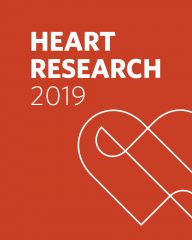
The Center for Heart Failure Research (CHFR) was established in 2002 and has since then promoted the integration of high quality research from bench to bedside. Center members have a broad range of expertise, covering state-of-the-art gene technology, protein function, integrative physiology in pathophysiological models and clinical studies. This collective knowledge and active research collaboration has resulted in more than 200 scientific publications each year.
The Annual Symposiums that began in 2003 have constituted an important platform for networking, introduction of up-and-coming academic talents, along with impressive research results, not to mention the presence of important international speakers shedding light on recent advancements in cardiovascular research.
Strengthening national research with the intent to promote scientific excellence has been an important mission for CHFR. Improving PhD programs and fostering young researchers is a way of reaching this goal. As part of this strategy, CHFR members initiated the establishment of the Norwegian PhD School of Heart Research (NORHEART) in 2012, together with key researchers from all major Universities in Norway.
The complete program from this year`s Symposium is available at heartfailure.no , while a report with pictures is provided by norheart.no. More information about the various posters presented at the Symposium from the different research groups is available on their webpages:
The role of inflammatory and immunological factors in cardiovascular disease
Myocardial function and cardiac imaging
Cardiac genetic diseases and sudden cardiac death
Integrated Cardiovascular Function
The Symposium opened Wednesday evening with the Cardiac Café. This year Deputy Editor in New England Journal of Medicine John Jarcho gave inside information about the Editorial process in one of the world`s most prestigious medical journals. On Thursday morning, Jarcho followed-up with the Key Note Lecture on State of the Art in Heart Failure, followed by the moderated poster sessions with presentations by young researchers.
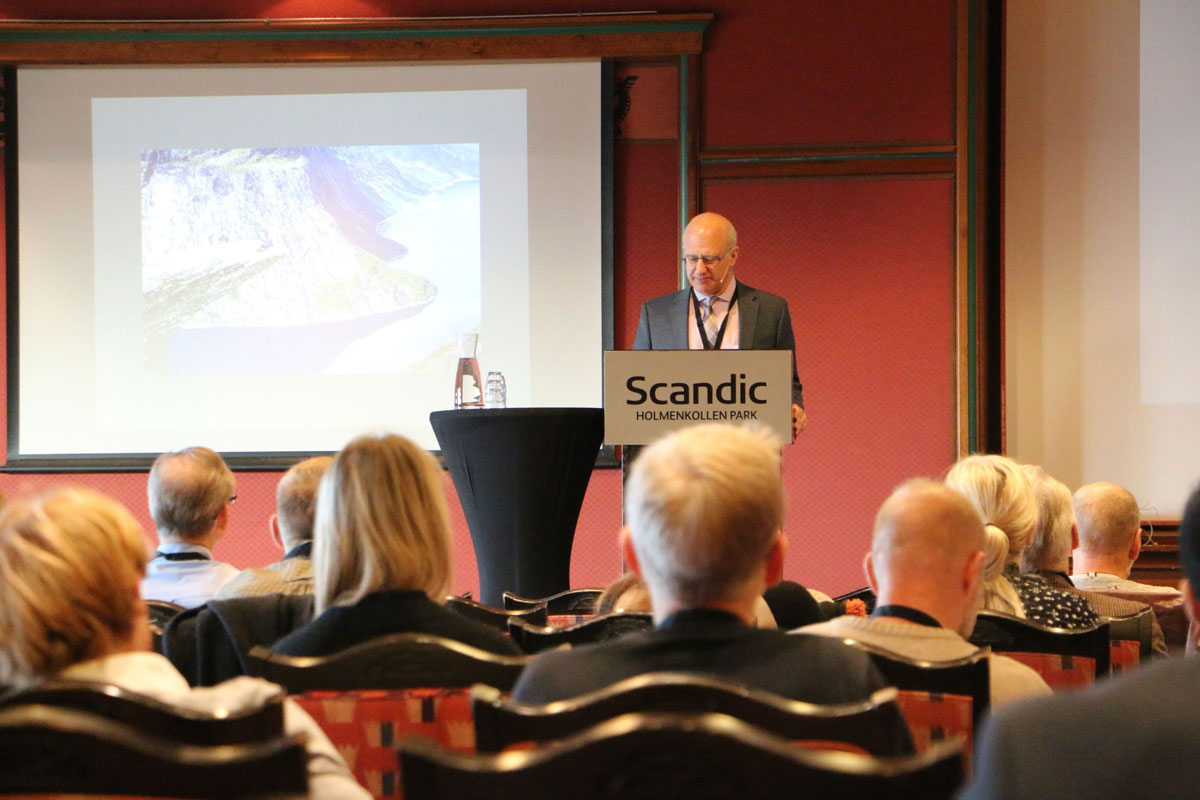
Key note lecture: The state of the art in heart failure
Photo: Anders Revdal, NORHEART
The first poster session “Biomarkers and cardiac disease”, moderated by Helge Røsjø and Erik Øie, took a deep dive in the predictive value of the highly sensitive cardiac troponin T marker. Winning the best poster prize from this session was Tonje R. Johannessen with her poster “Prehospital assessment of the One-hoUr rule-in/rule-out algorithm using a high-sensitivity cardiac Troponin T assay in a low-prevalence population for Acute Coronary Syndrome (OUT-ACS)”. Authors: Johannessen TR, Atar D, Halvorsen S, Larstorp AC, Mdala I, Vallersnes OM
This study investigated whether the 0/1-hour algorithm for high-sensitivity cardiac troponin T (hs-cTnT) is safe for implementation in a primary care emergency setting where the patients have a lower pre-test probability for an acute coronary syndrome. Concluding that predictive value seems safe and applicable for a faster assessment of patients with non-specific chest pain in a primary care emergency setting, thus possibly reducing the need for hospitalization.
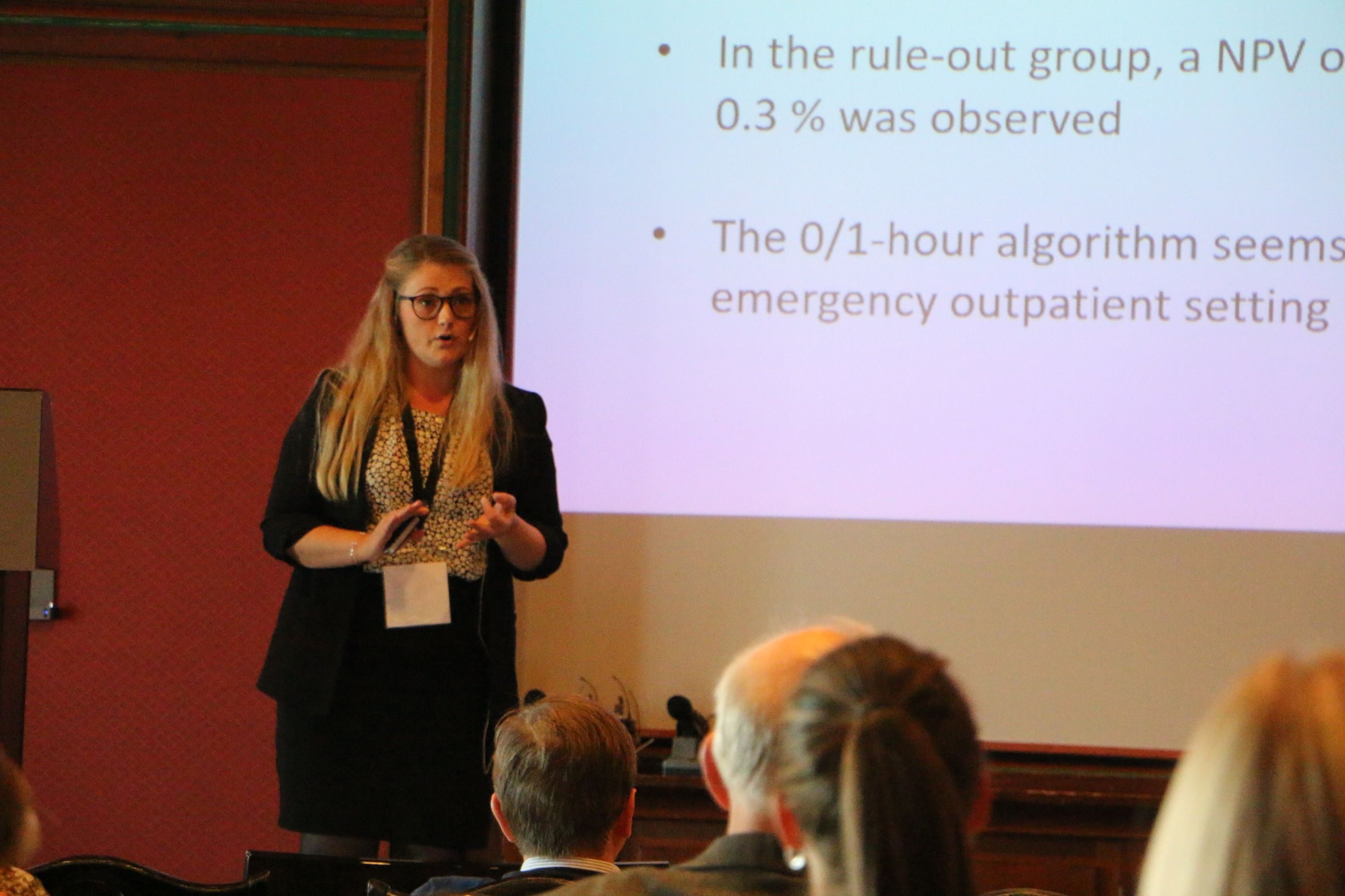
The second session ”Cellular signaling: Myocardial hypertrophy and ischemia”, moderated by Terje Larsen and Kåre-Olav Stensløkken focused mainly on fibrosis and its underlying factors. Winning the best poster prize in this session was Karoline Bjarnesdatter Rypdal with her poster “The secreted cardiac fibroblast glycoprotein ADAMTSL2 is up-regulated in heart failure and directs anti-fibrotic signaling”.
Authors: Rypdal KB, Strand ME, Melleby AO, Palmero S, Dahl CP, Tønnessen T, Gullestad L, Christensen G, Lunde IG
The ADAMTSL (a disintegrin and metalloproteinase with thrombospondin motif like) protein family are secreted glucoproteins, with a largely unknown role in the heart. The ADAMTS(L) share the same ancillary domain as ADAMTS protein family that is known to be involved in, among others, connective tissue structure, inflammation, cell migration and coagulation. What makes ADAMTS(L) distinct from ADAMTS is the protein family’s lack of any enzyme activity. This study demonstrated that cardiac levels of ADAMTSL2 were robustly increased in heart failure resulting in less activation of transforming growth factor beta (TGF-β) in cardiac fibroblasts, indicating that ADAMTSL2 directs anti-fibrotic mechanisms in the heart.
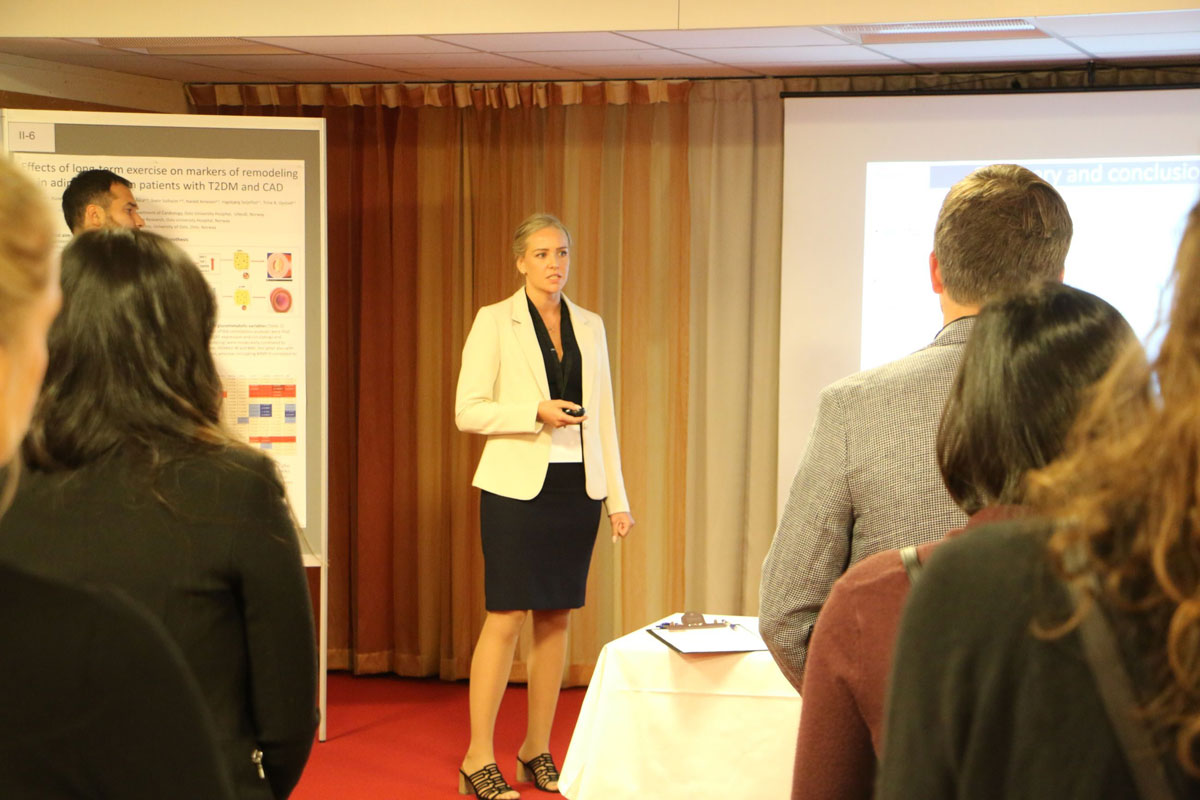
The third session «Cardiac function during heart failure and exercise training», moderated by Øyvind Ellingsen and Ole-Jakob How, focused on the impact of exercise in heart failure.
Winning the best poster prize was Eystein Skjølsvik with his poster “Exercise is a marker of impaired left ventricular function in patients with Lamin A/C mutations”.
Authors: Skjølsvik ET, Hasselberg NE, Dejgaard LA, Lie ØH, Andersen K, Holm T, Edvardsen T, Haugaa KH
Competitive sports have been associated with adverse events in patients with lamin A/C mutations, but data on recreational exercise has been lacking. This study showed that systolic function was impaired in physically active lamin A/C patients, suggesting exercise restriction beyond competitive sports for this patient group.
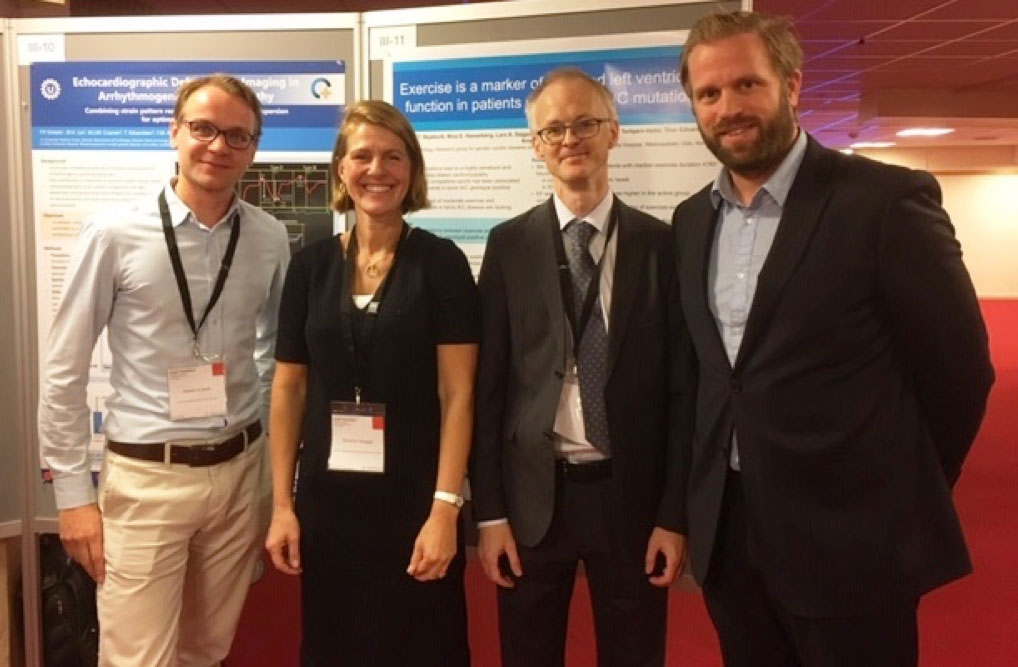
The fourth session «Cellular signaling: Myocardial function and arrhythmias”, moderated by Ivar Sjaastad and Leif Erik Vinge focused on the underlying causes of arrhythmia.
Winning the best poster prize was Jonas Skogestad with his poster “Phosphodiesterase 2 inhibition activates the Na+/K+-ATPase and prevents ventricular tachycardia”.
Authors: Skogestad J, Robinson EL, Børstad M, Lunde M, Marshall S, Melleby AO, Albert I, Sjaastad I, Carlson CR, Aronsen JM
Na⁺/K⁺-ATPase (NKA) regulates the intracellular balance of sodium (Na⁺) and calcium (Ca⁺). Lowered NKA activity could lead to ventricular tachyarrhythmias, but no medicine activating NKA exists. Phosphodiesterase 2 (PDE2) colocalize with NKA, regulating its activity through A-kinase anchor protein (AKAP)-bound Protein Kinase A (PKA)-RII with no effect on global cAMP.
PDE2 enzyme is expressed in various tissues, including the heart where it regulates intracellular concentrations of cyclic adenosine monophosphate (cAMP) that activates protein kinases and regulates the function of ion channels. AKAP binds regulatory subunits (RI and RII) of protein kinase A, allowing for specific targeting of substrates regulated by PKA. The anti-arrhythmic effect was dependent on AKAP-bound PKA-RII, leading to the conclusion that PDE2 inhibition activates NKA and prevents ventricular tachycardia, constituting a novel anti-arrhythmic strategy.
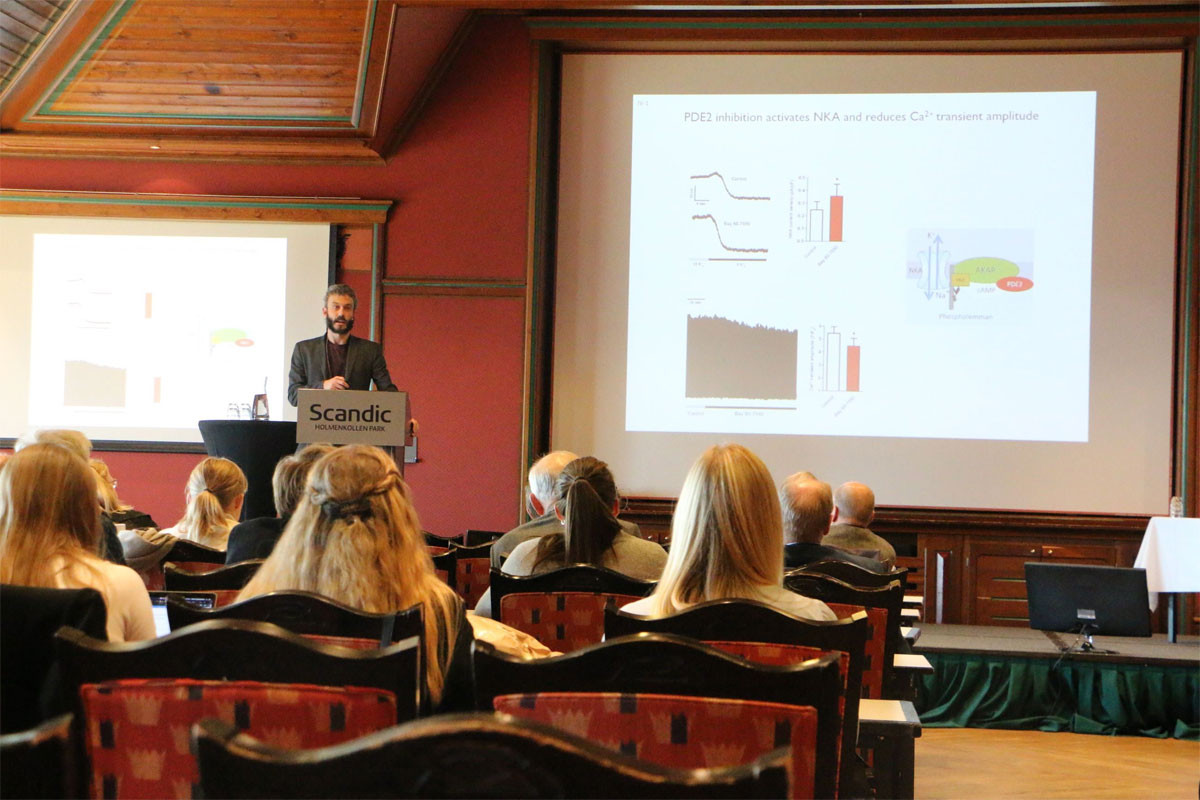
The fifth session «Diagnostic and therapeutical strategies for cardiac disease», moderated by Helge Midtbø and Geir Øystein Andersen focused on new diagnostic methods for improved patient care. Winning the best poster prize was Monica Chivulescu with her poster “High penetrance and similar disease progression in probands and family members with arrhythmogenic cardiomyopathy”. Authors: Chivulescu M, Lie ØH, Popescu BA, Skulstad H, Edvardsen T, Jurcut RO, Haugaa K
The study concluded that disease penetrance was fairly high in family members both at inclusion and during follow-up. Rate of progression was similar in probands and family members with arrhythmogenic cardiomyopathy and structural progression was associated with higher incidence of severe arrhythmic event in arrhythmia free patients during follow-up.
This study was also mentioned in an ESC Cardio Talk during ESC Congress - the biggest cardiovascular event of the year, in addition to being covered by Dagens Medisin – a Norwegian newspaper present at the congress.
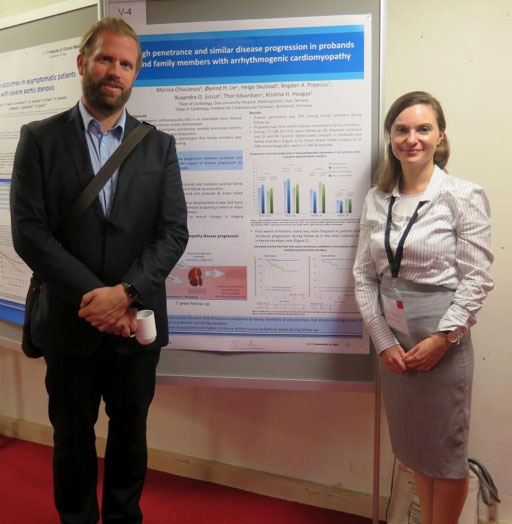
The last session “Inflammatory mediators and metabolism”, moderated by Kaspar Broch and Ingebjørg Seljeflot presented many studies on gut microbiota and its association with cardiovascular outcome.
Winning the best poster prize was Ragnhild Helseth with her poster “Neutrophil extracellular trap components associate with infarct size, ventricular function and clinical outcome in STEMI”.
Authors: Helseth R, Shetelig C, Andersen GØ, Langseth MS, Limalanathan S, Opstad TB, Arnesen H, Hoffmann P, Eritsland J, Seljeflot I
The study concluded that high levels of dsDNA measured the first day after an ST-elevated myocardial infarction (STEMI) were associated with infarct size, adverse left ventricular remodeling and clinical outcome. These observations indicate that extracellular nuclear material contributes to the inflammatory response following acute myocardial ischemia.
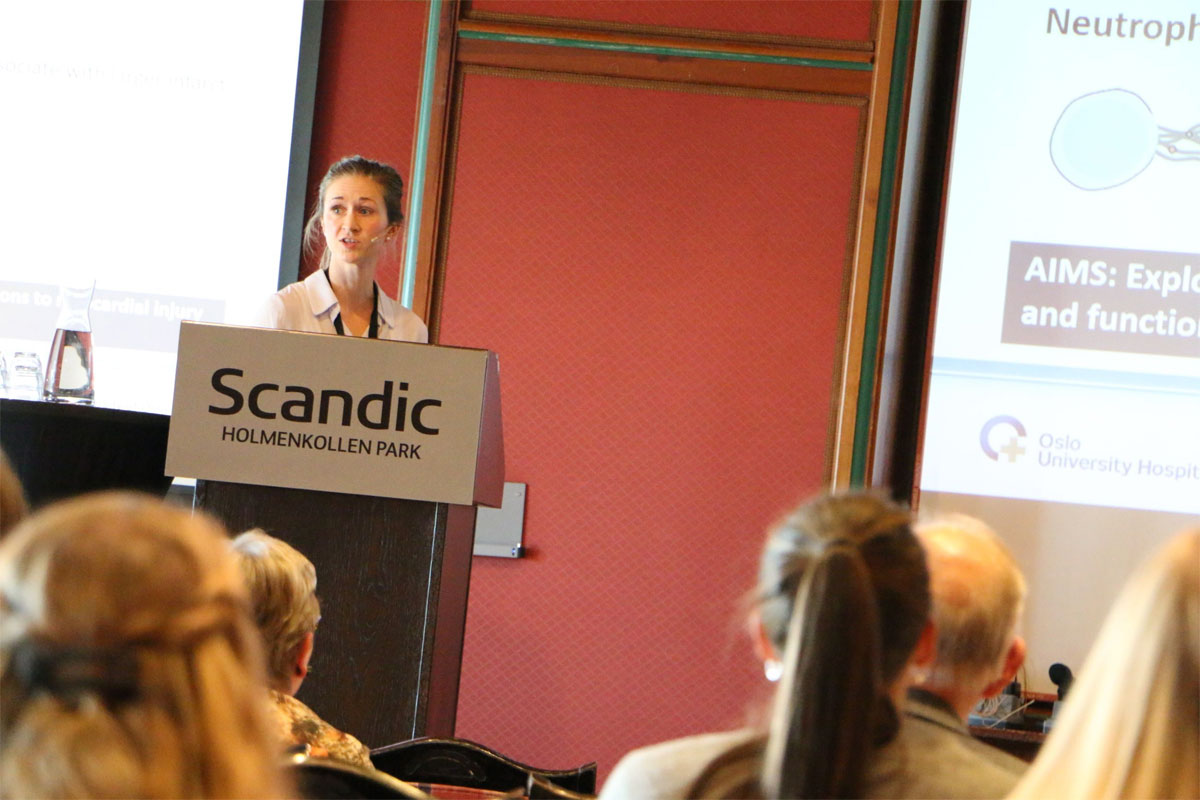
Session winner Ragnhild Helseth presents her poster at the closing session of the Symposium.
Photo: Anders Revdal, NORHEART
